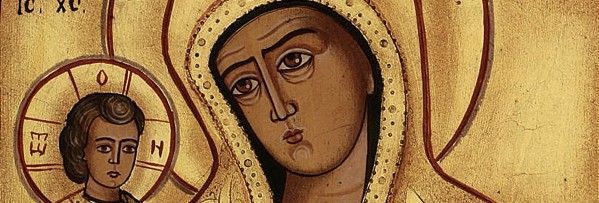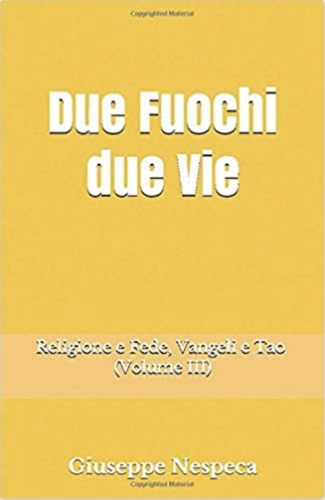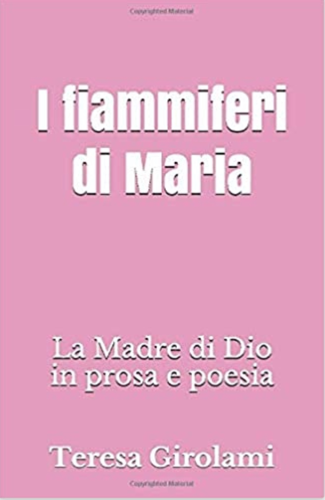(Mt 28:16-20)
Matthew does not describe the Ascension, but conveys the same message as Acts 1:1-11 (using different images): the passing of the baton.
Unlike Luke and John, Matthew places the encounter with the Risen One in Galilee, not in Jerusalem, the sacred centre. The setting has theological significance.
He does not make himself present and visible in the holy city, but rather on the outskirts, and the apostles are invited to follow in the footsteps of the Master, starting from where his mission began.
The members of the communities of Galilee and Syria to whom Matthew addresses himself came from Judaism, but were despised by observant Jews, who considered them double traitors to their culture.
Because of invasions from the north and east, the population of those lands was heterogeneous, and the orthodox viewed this mixture with suspicion. Moreover, by adhering to Christ, they had called into question the customs and authority of traditional teachings.
It is precisely to these lowly people that the Gospel of the Lord is addressed, beginning with the experience of 'the Mount' (v. 16).
In biblical and Semitic culture in general, the mountain is the place of special experience of the Eternal One, of his manifestations.
In Matthew, the term alludes to the setting of the Beatitudes: the place of God's new work of salvation that surpasses the Law.
Jerusalem was no longer to be the centre of worship and religiosity. The veil of the Temple was torn (Mt 27:51): access to the Father was no longer limited to a place.
Every believer in Christ, of whatever background, who decided to supplant the principles of the 'plain' (a competitive and common way of thinking and acting) with those of 'the Mount' was enabled to become a living sanctuary.
The evangelist places Jesus on 'the mountain' when he wants to emphasise a fundamental reference or gesture (as opposed to the fideist imagination).
It is a 'place' in the sense of powerful moments of the Spirit, of coincidences between the divine and human nature: where we experience Christ manifesting his existential 'authority' throughout life.
It is a summit that reveals the criteria of the Mission - with the symbolism of divine Revelation and alluding to its own post-Easter condition (a high, 'heavenly' situation).
And only those who have assimilated the teaching of 'the Mount' - only those who have experienced the Risen One - can carry out this Mission.
In fact, the mandate and sending of the disciples is a decisive act. It introduces a radical change in the relationship with the disciples, who discover the divine in Him (v. 17a) and at the same time remain with their perplexities (v. 17b).
Matthew is aware of the doubts that are spreading. But it is precisely the uncertainty and scandalous behaviour of the first direct followers that allows him to encourage the brothers of the community (even if in his writing there is a tendency to present the apostles as rather upright models).
The 'churches' are not made up of perfect children. Indeed, he recalls (in this way) an unprecedented aspect that Jesus had introduced into the criteria of discernment and real life: the coexistence of faces.
While religious existence was conceived in terms of procedures, the chiselling of feelings, 'evidence' and upward progress, the Master taught the integration of ethnic groups, affections, emotional mixtures and even opposing sides.
According to the new Rabbi, life in the Spirit brings joy because it discovers hidden treasures precisely in the shadows of unstable people and situations. Joseph's own doubt was fruitful (cf. Mt 1:18ff).
It is good to believe in Jesus and, at the same time, to have questions: this is the difference between Faith and common religiosity.
Only Christ is given all 'Ex-ousìa' (v. 18): authority that is not imposed, that emanates from the Mystery without coercion, and is therefore freely accepted (i.e. a kind of authority that comes from being itself).
This is a decisive moment for establishing the criteria for ecclesial action that makes Jesus present. He entrusts us with a task, confers his own 'powers' upon us, and introduces us into the communion of life.
It seems paradoxical, but it is on a platform of mixtures (a solid and oscillating base) that the Church becomes capable of inexplicable recoveries - and that the apostles are sent out (vv. 19-20).
It is the backdrop of competitive and malleable energies, taken up and assimilated, that changes life and prepares God's future—not mass castration or sterilisation.
Faith and religious evidence now clash, sparking sparks.
For this reason – on uncertain ground – there is openness to the whole world (v. 19), whereas in a previous passage Matthew had limited the mission to the lost sheep of the house of Israel (Mt 10:5-6).
The living experience of conviviality among differences has made it possible to understand the vitality of chaos, which shifts our gaze, broadens it, and forces us to overcome one-sidedness.Confusion and upheaval which, as missionaries well know, solve real problems, opening up unexpected horizons of incalculable value.
Imperfection has been fruitful in unexpected outcomes and has opened up a new era: the novelty of expanded ecclesiology.
Now the light that shone on the people immersed in darkness when Jesus settled from Nazareth in Capernaum (Mt 4:13-) must spread everywhere, through a discipleship extended to all peoples (pagans: v. 19 Greek text) 'every day and until the end of the age' (v. 20).
The particularism previously recognised (perhaps out of respect for the community and space-time limitations) gives way to the new Inauguration.
Now the boundaries fall away, giving way to total universalism - without any frontiers.
The immersion (v. 19: Greek meaning of the term Baptism) in the wonder that surrounds the Person of the Lord permeates the disciple of Christ to the very core - without any need for binding procedures and rules, which are well-established but external.
Light animated by the promise of the Risen One who, recalling Emmanuel - God-With-Us - closes Matthew's Gospel as it was begun and announced by the Prophets (cf. Matthew 1:22-23).
The Ascension is not a cut, a separation, or a departure, but Communion. Prophecy has become permanent reality.
To internalise and live the message:
How do you enter into the New Covenant? Are you attentive to the dialectic between faith and doubt? Do you consider it a driving force, both for new contemplation and for the flowering of new energies?
How does Jesus' self-revelation affect you? What strength has it given you? How important are the experience and vigour of 'the Mountain'?












